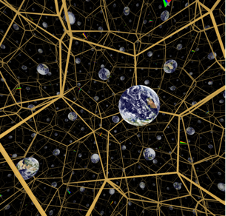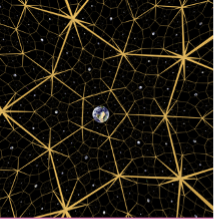
Anastasiia (Nastia) Tsvietkova is an Associate Professor in the Mathematics and Computer Science Department. Her interests mainly lie in the areas of low-dimensional topology and geometry, with a focus on 3-manifolds. The topics overlap with questions from knot theory, computational topology, differential geometry, algebraic and quantum topology. She has received NSF CAREER award, Von Neuman Fellowship at the Institute of Advanced Study, Princeton, and Rutgers Board of Trustees Research Fellowship for Scholarly Excellence. She has taught a wide range of undergraduate and graduate courses in mathematics and theoretical computer science at Rutgers-Newark, the University of California - Davis, Okinawa Institute of Science and Technology in Japan, Louisiana State University, and the University of Tennessee, Knoxville, and supervised more than twenty students and postdocs.
How does your research, scholarship or professional experience inspire your teaching?
I study topology and geometry of 3-manifolds. The space we live in is an example of a 3-manifold, but there are many other such spaces, far less natural to us, and far more interesting from a mathematical point of view. These spaces appear in biology, physics, chemistry and data science, but to understand them, we often study them from the mathematical perspective first.
Some models of two different 2-dimensional spaces (also called 2-manifolds or surfaces), designed and printed by Nick Owad (photos by Anastasiia Tsvietkova).
In many cases we study such spaces before they appear in applied science. The description often involves topology or geometry. Topology relates to the properties of a space that do not change under continuous deformation: e.g. if you bend or deform the space, they are still there. Geometry is something much more rigid: for example, angles, volumes, areas. As you might guess, this is a very visual field of mathematics. Much of my research time is spent drawing. I really feel that a picture is worth a thousand words. And yet words are important so that we can describe the pictures rigorously, and so that we communicate what we discover. I also noticed that mathematical thinking, and even spatial and geometric thinking can be very different for different people. Some people are better at visualizing small details and simplified partial sketches, as an engineer might do. Others developed an ability to see the important parts of a global picture. And yet others prefer to use words and numbers when possible: that is, to draw from the areas of logic, combinatorics (an area of mathematics) and algebra instead of visualizing something geometrically. All of this informs my teaching.
What is one innovative or unique teaching practice you’d like to share?
Simple geometric pictures often help to understand classical mathematical concepts and theorems. I have an extensive library of visuals, software and tools that come handy even in basic mathematics courses, including Calculus.
Different three-dimensional worlds (also called 3-manifolds), viewed from inside, from the program Curved Spaces by Jeffrey Weeks (publicly available free of charge at https://www.geometrygames.org/CurvedSpaces/index.html.en)
Geometric problems appear across many fields of mathematics and in the courses we teach, and proving statements concerning geometry helps students to develop strong proof-writing skills. The evolution of geometry and topology from Euclid's age to modern times is amazing; it is now used in quantum physics, for example, and is expected to be useful for quantum computing. Sharing bits from the history of mathematics can be entertaining, and can help to break the ice and motivate students. Basic mathematical courses are obligatory for many different majors, and many students who must take them struggle. It is important to try to show that mathematics, even on the basic college level, does not consist solely of dry formulas and computing skills. Rather, it is a beautiful and rich area of study, full of elegance, depth and rigor, and providing building blocks and tools for many other disciplines. Another aspect of my research is computational: some of my work lies in computational topology and geometry, and involves topics from theoretical computer science. This helps me to engage students who are not only interested in the beauty of pure mathematics, but might be looking to gain a more applied and IT-oriented background.
How does this work advance the university's mission as a publicly engaged anchor institution?
The importance of mathematical education in modern world is only growing. Our department of mathematics and computer science at Rutgers-Newark teaches mathematical courses to future engineers and scientists, IT workforce, economists and business administrators, nurses and doctors, and other majors. Being involved in such a large program of course offerings and curriculum planning requires strong input from the faculty at our department, with their mathematical expertise, and breadth and depth of knowledge. I am honored to be a part of that faculty. The above concerns teaching, but there is another academic activity I enjoy: it is working with students and postdocs on research. Much of my research provides opportunities to study interesting special cases. Quite a few problems can be stated in a simple form, despite that the proofs might be difficult. All this makes the research suitable for junior mathematicians at different levels of depth. I have been a research mentor to students and postdocs coming from many different backgrounds, and it has been a rewarding experience
Additional Resources on Dr. Tsvietkova's work:
Reader Bonus! Nastia's favorite book for non-mathematicians who are curious about manifolds:









Comments